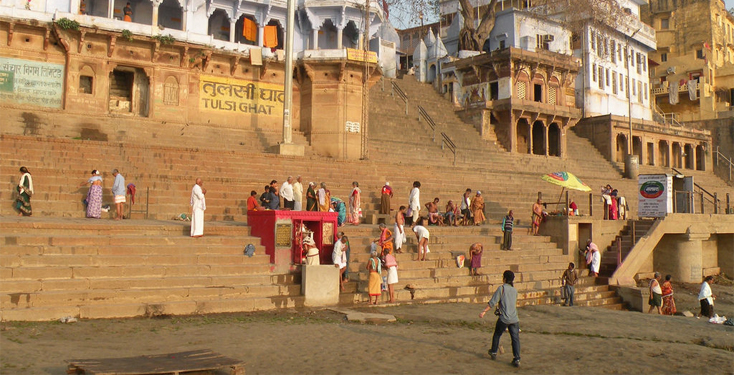Tulsi Ghat Travel Guide

Tulsi Ghat is another essential Ghat of Varanasi. Tulsi Ghat is named after the incomparable Hindu writer of the sixteenth century, Tulsidas. Tulsi Ghat is an essential window into the Hindu folklore. Tulsi Das formed the incomparable Indian epic, Ramcharitmanas at Varanasi. As indicated by folklore, when Tulsi's composition fell into the River Ganga it didn't sink and continued drifting. It is likewise trusted that the Ramlila (story of Lord Rama's life) was organized here out of the blue. Maybe, to honor this a sanctuary of Lord Ram was based on the Tulsi Ghat. A considerable lot of the relics of Tulsi Das are safeguarded at the Tulsi Ghat. The house in which Tulsidas kicked the bucket has been protected and his samadhi, wooden stops up, pad and the symbol of Hanuman, which Tulsi loved, are largely still flawless here.
History of Tulsi Ghat Varanasi
Varanasi's ghats are a basic piece of the city's way of life. Tulsi Ghat is a standout amongst the most vital, yet generally loose. See aficionados and sadhus (sacred men) completing religious practices and be a piece of hundreds of years old celebration conventions. Tulsi Ghat takes its name from the sixteenth century artist Goswami Tulsidas, who composed the epic sonnet Ramcharitmanas while in Varanasi. Today, relics of the artist lie dissipated around the ghat.
The means of Tulsi Ghat are an extraordinary spot to watch the enrapturing action that unfurls on the banks of the Ganges River. For the duration of the day, pioneers, merrily dressed sadhus and pandits (Hindu researchers) touch base to wash down themselves in the blessed waterway, implore and give contributions. Spot ladies washing garments and youngsters bouncing into the water from the stages. Visit at first light to watch a beautiful dawn and see explorers completing their morning petitions.
Search for the little house at the ghat, which is the previous home of Goswami Tulsidas. It contains antiquities identifying with the life of the praised artist. Among these are a couple of wooden obstructs and a very much saved icon of the Hindu monkey god Hanuman.
Go to Lolark Kund, a hallowed water tank behind the means of the ghat. Aficionados come here to venerate Lolark Aditya. Many trust that washing in the water will convey long life to children and fix skin burdens. Join explorers for the Lolark Shasthi celebration, when many lady plunge upon the sacred water and pay reverence to Surya, the Hindu sun god. The celebration happens in August or September.
How to Reach Tulsi Ghat Varanasi
Take an auto/cycle-rickshaw or taxi to Assi Road. Tulsi Ghat is found near Assi Ghat in Shivala.
Time to visit Tulsi Ghat Varanasi
Tulsi Ghat has tumbled down towards the waterway, however in the period of Kartika (October/November) a celebration dedicated to Krishna is praised here.
Tulsi Ghat Banaras Location
Attraction of Tulsi Ghat Banaras
For the sake of posterity, the mortal remains of Tulsi Das have been stored at this spot, and so are his wooden clogs, pillow, and an idol of Lord Hanuman. Ghat-hopping tourists in Varanasi can visit this site for an enriching experience, especially around Diwali, when a large gathering of devotees throng Tulsi Ghat to witness the grand stage portrayal of Krishna Leela. People who come here and pray for progeny, long life and freedom from leprosy, the sacred waters of Lolark Kunda located close to the ghat, do the trick.
So if you're really lucky, you may even have your prayers fulfilled.
© Copyright 2018 Design ByIndia Easy TripAll Rights Reserved

